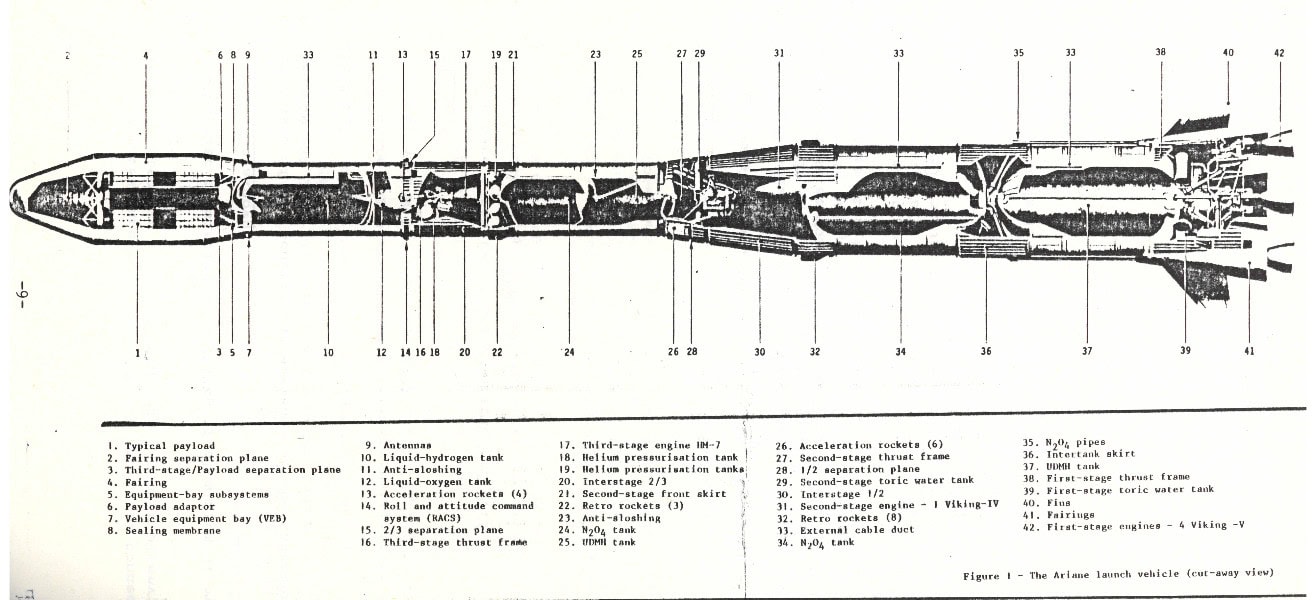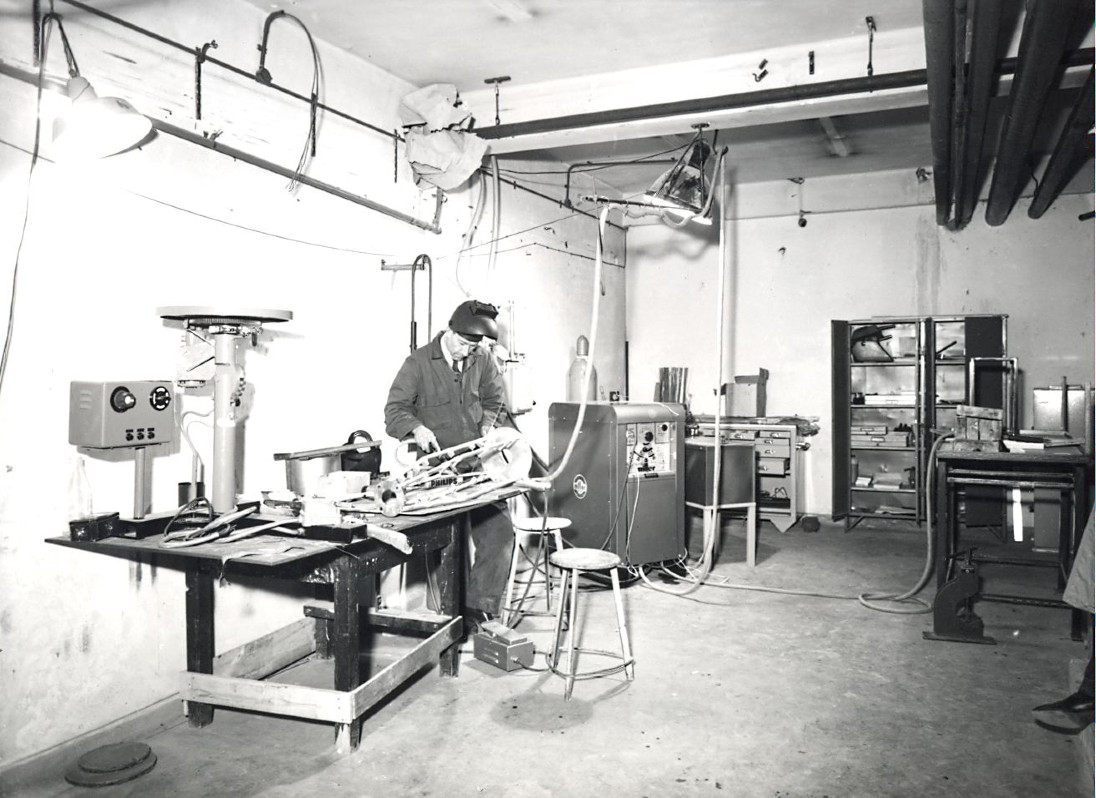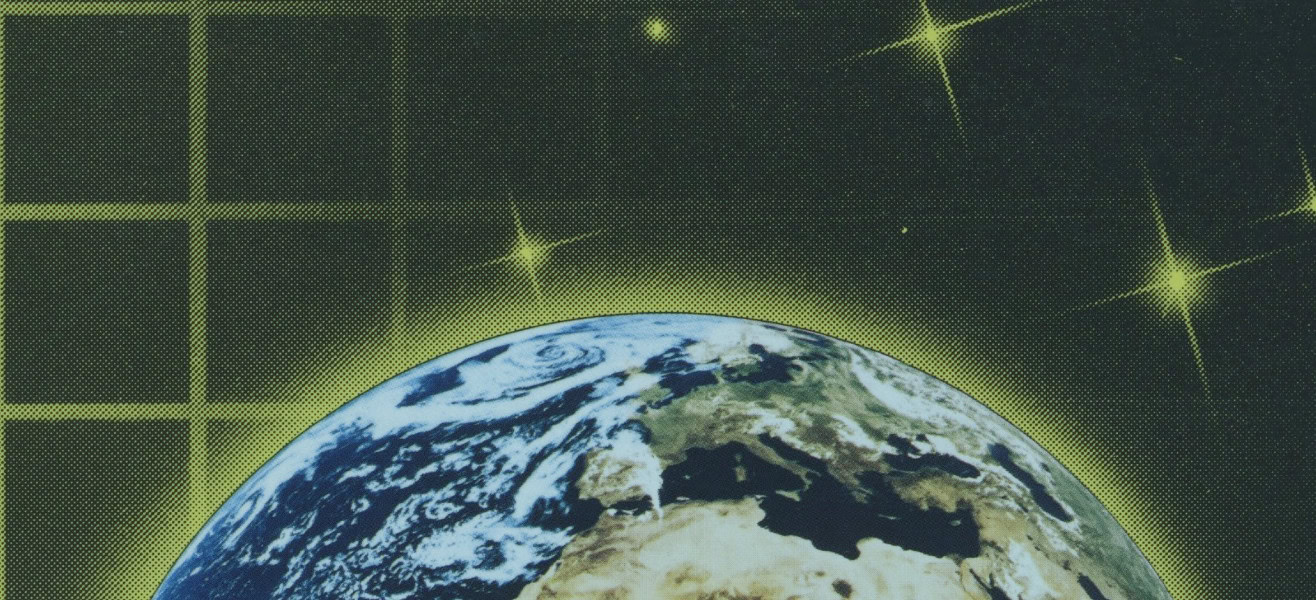SlideShow
- 0
- 1
- 2
- 3
- 4
Explore
the Archives
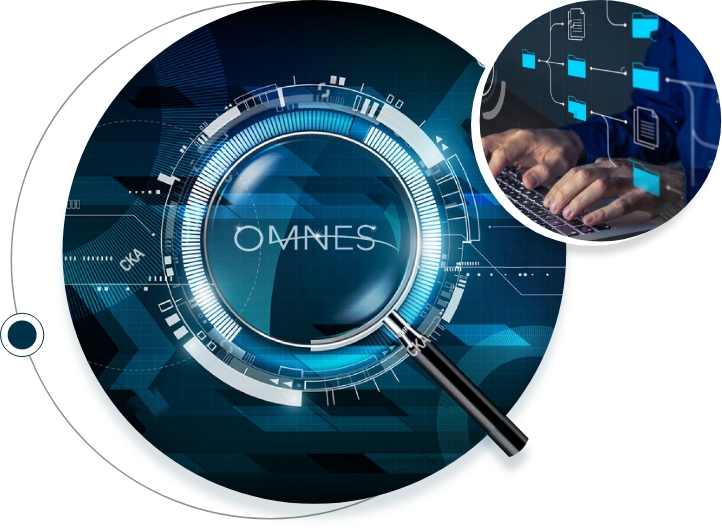
Archives Highlights
Browse our digital archive holdings by collection. Each collection contains a description of the material and link to it in our Archives database.
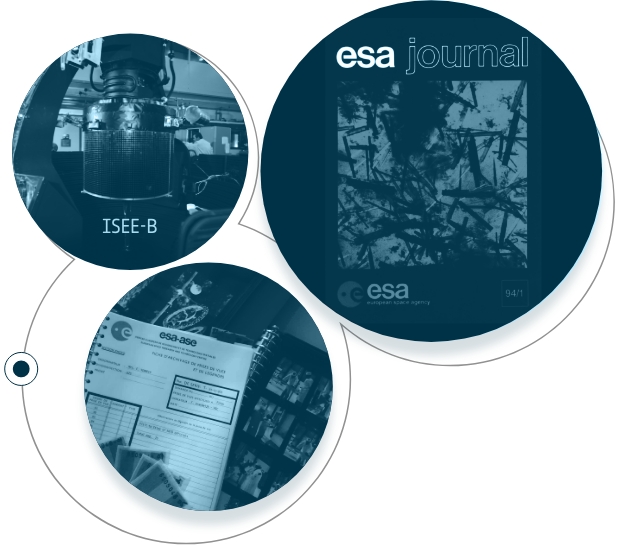
Digital Resources
Links to further digital resources for space heritage, hosted by ESA or the Historical Archives of the European Union.
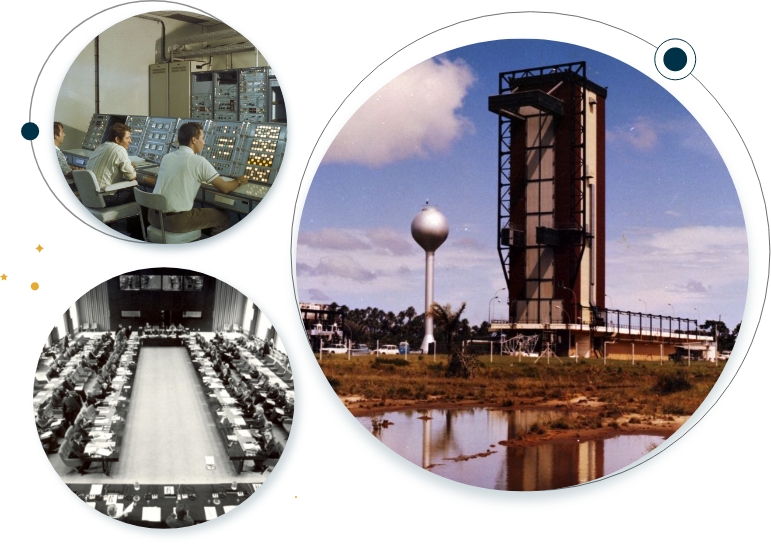
Object
of the month
Object of the Month
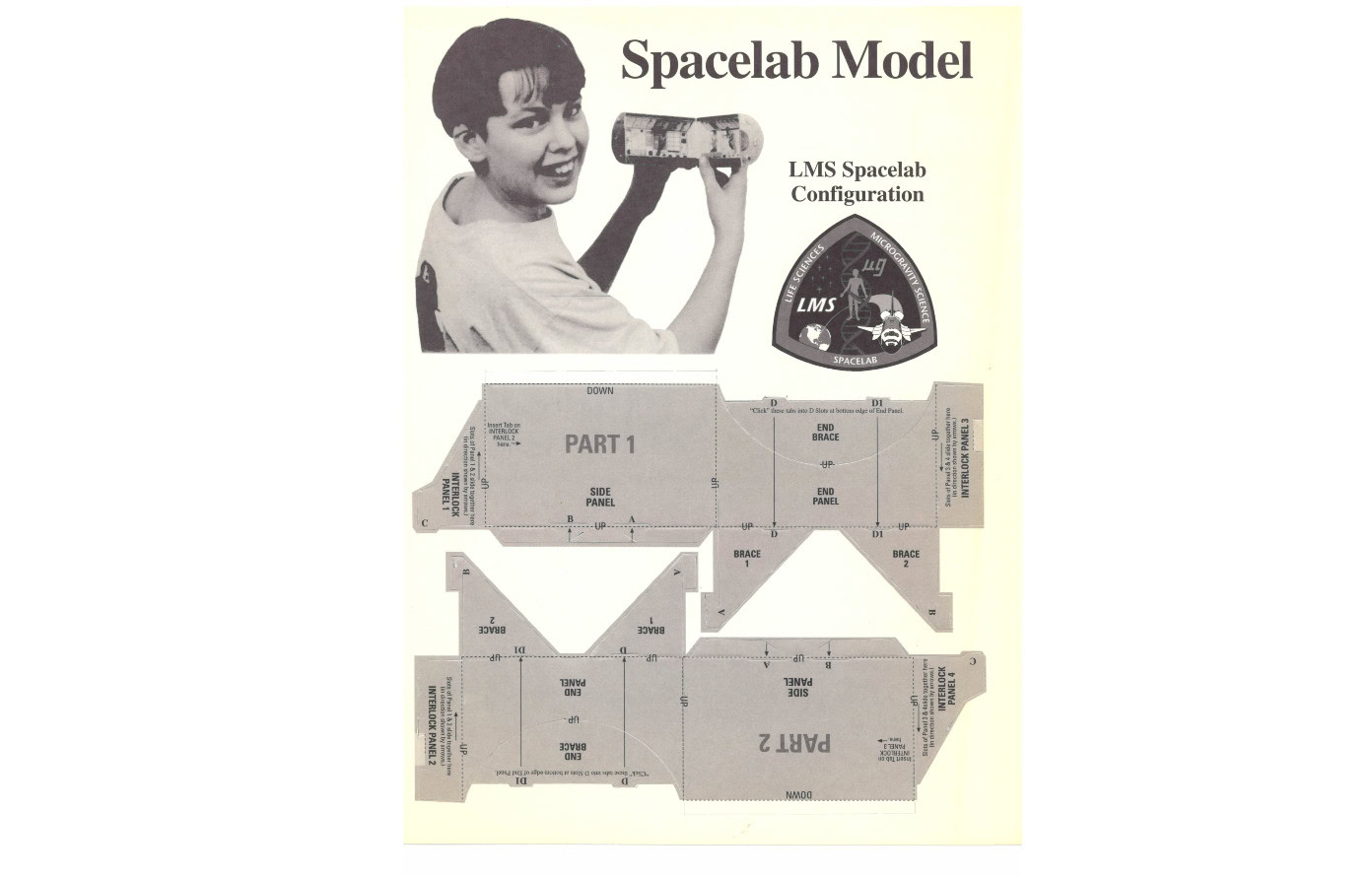
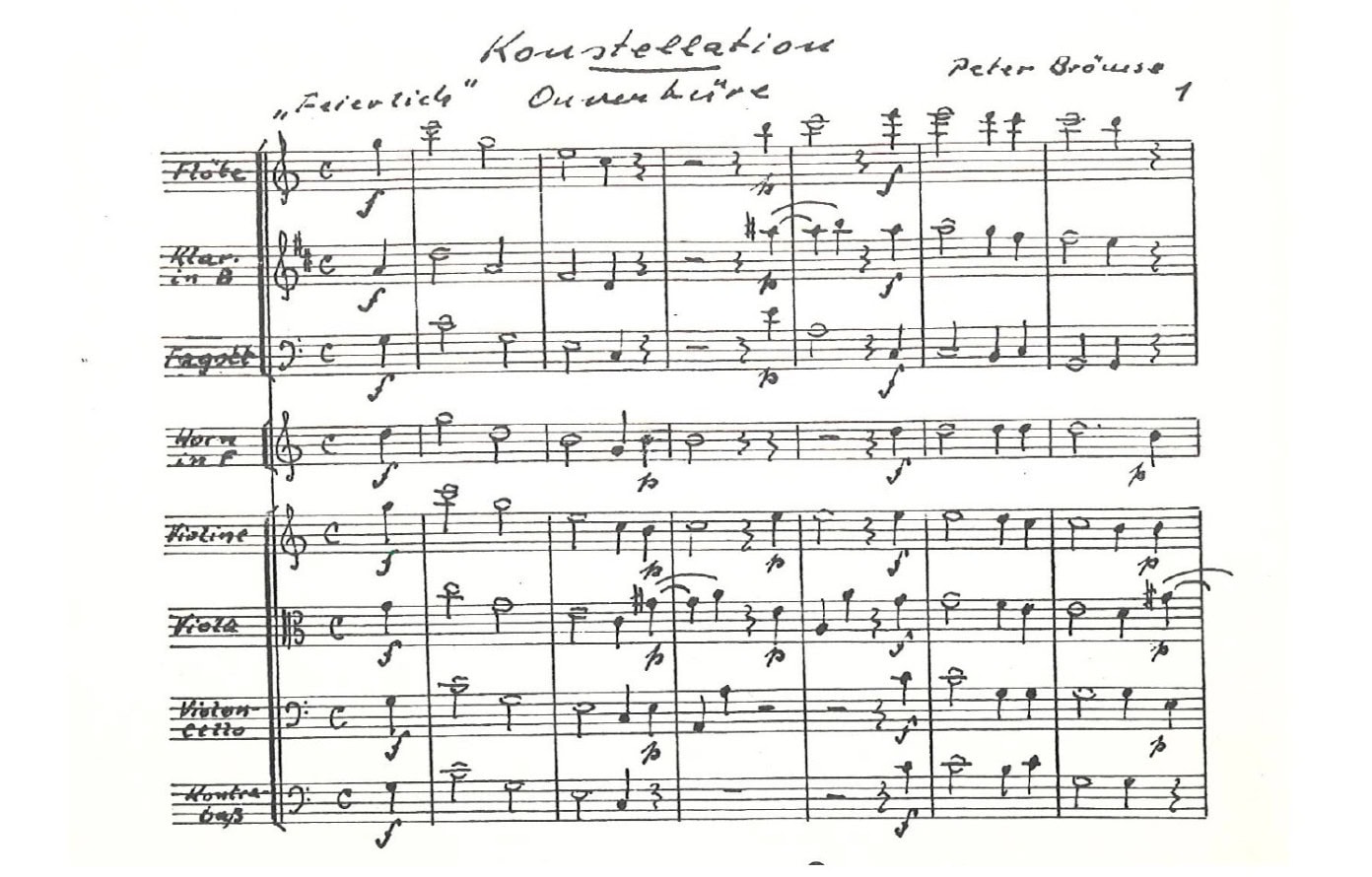

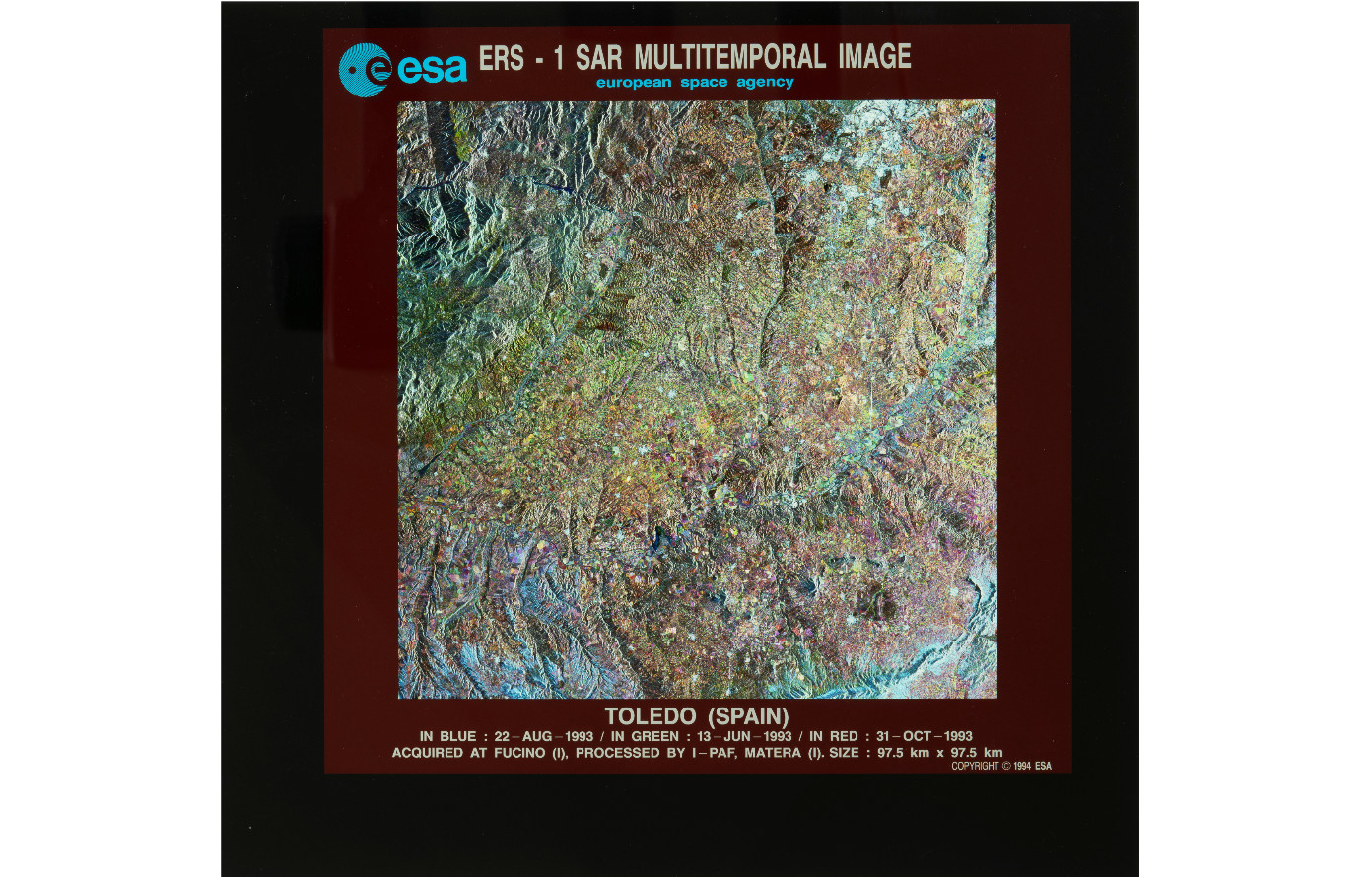
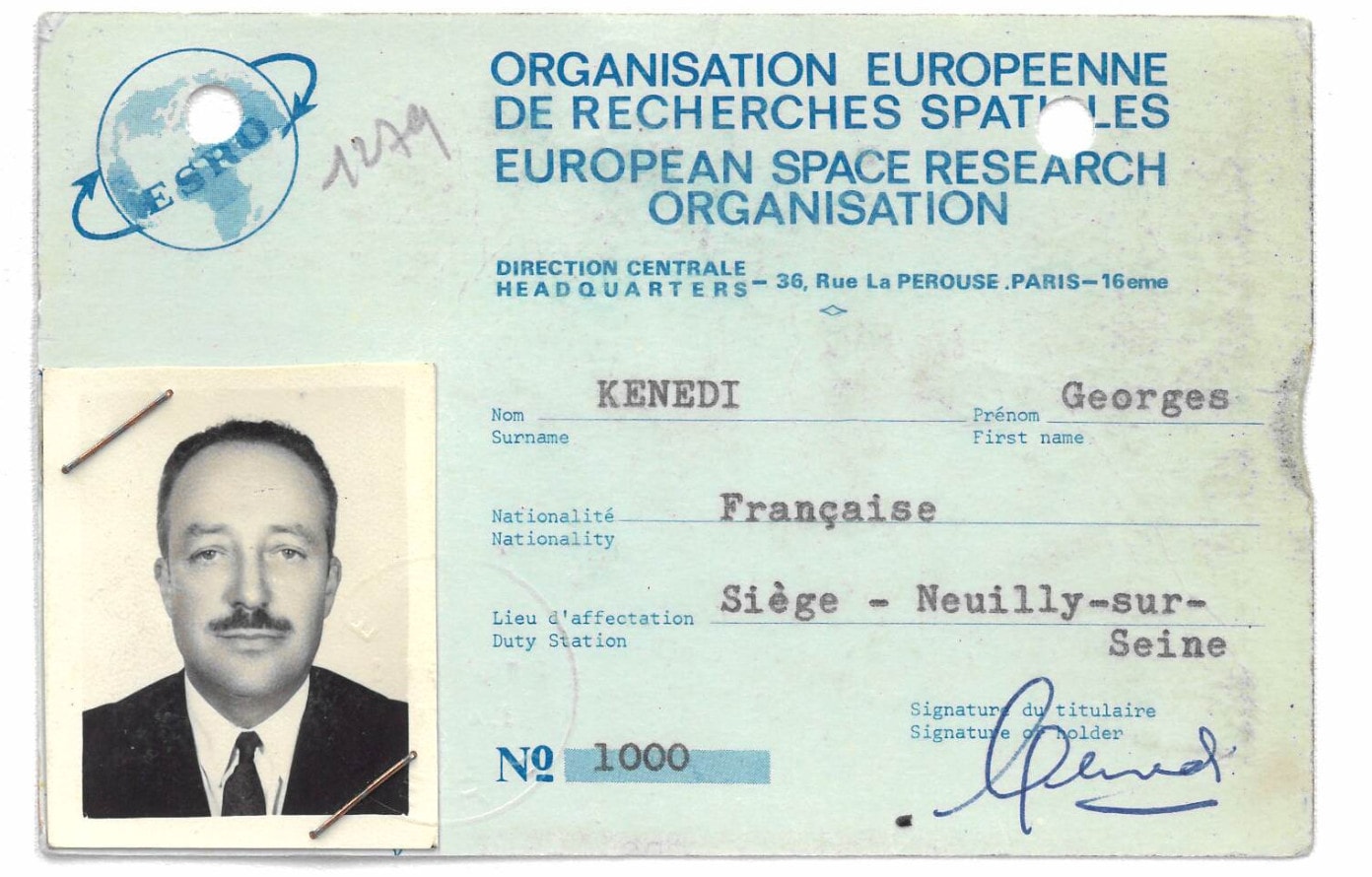
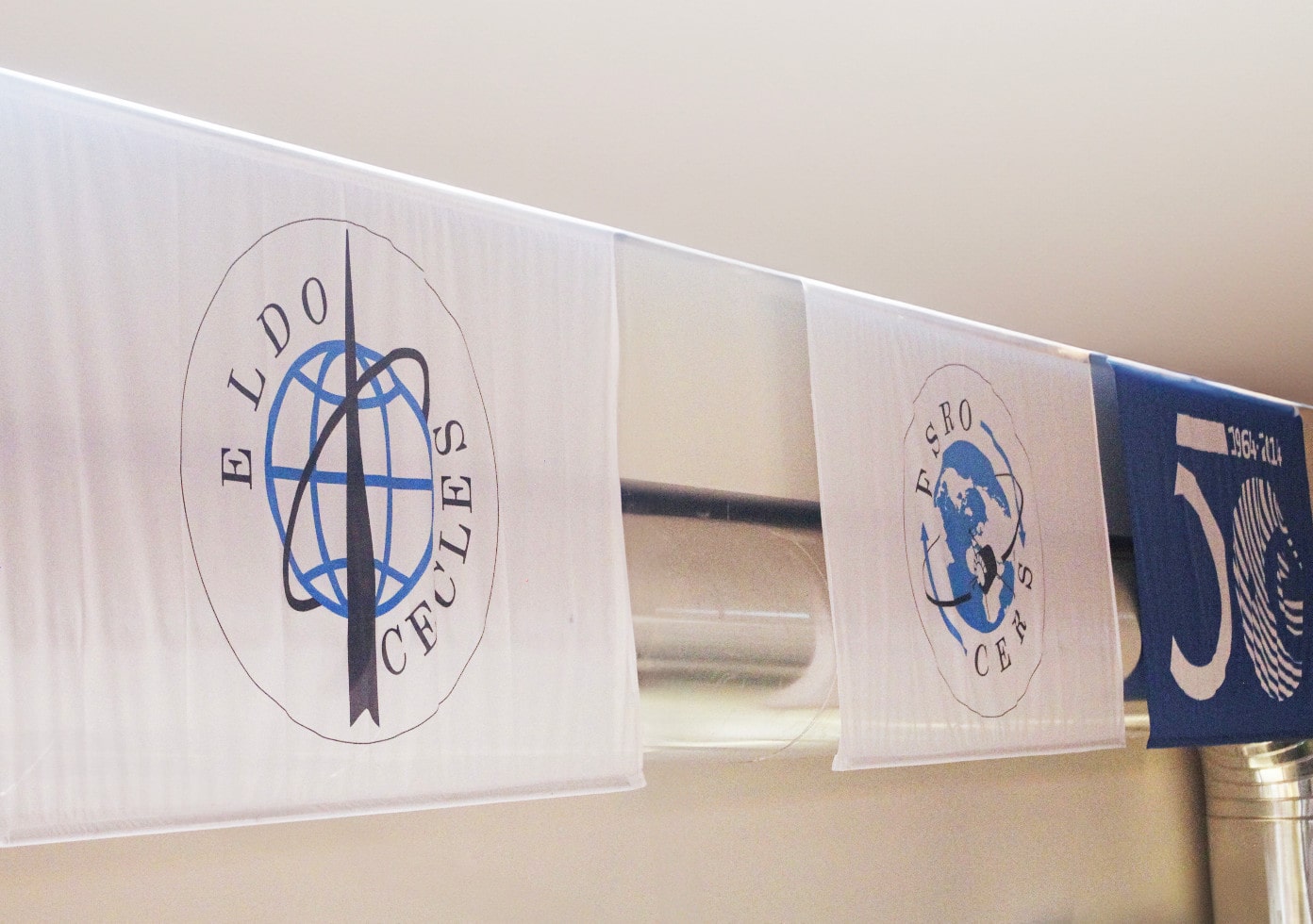
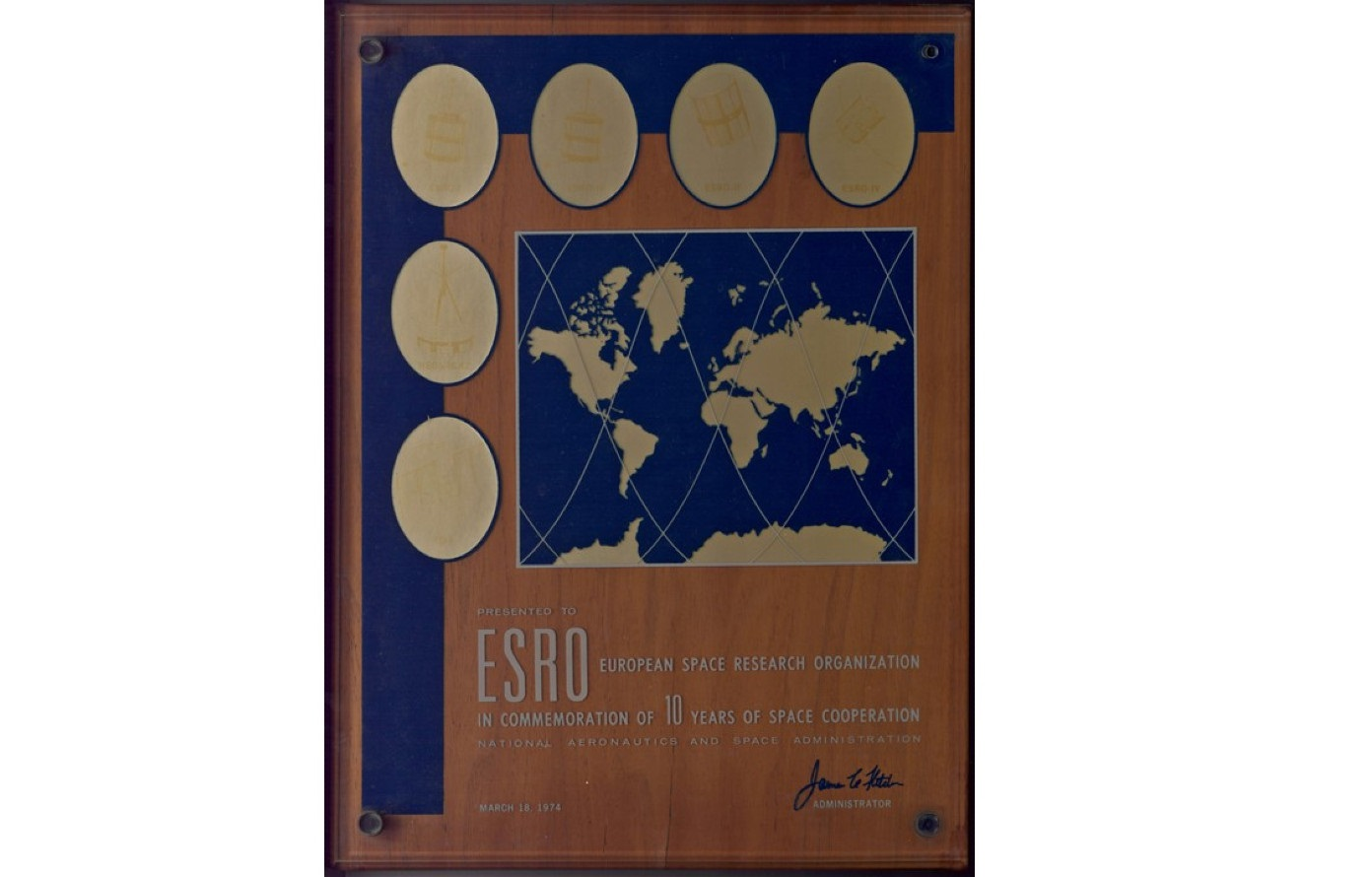
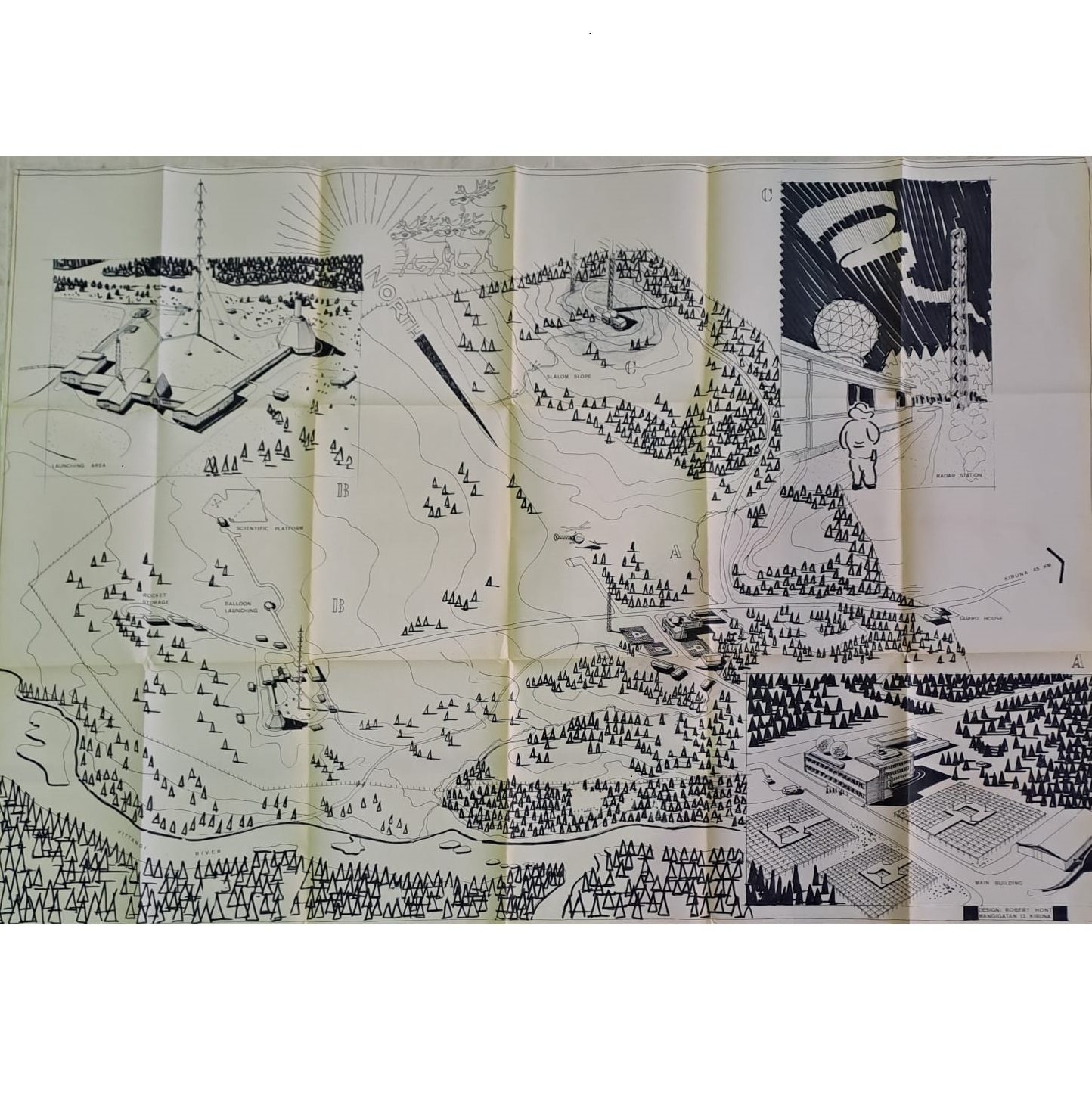
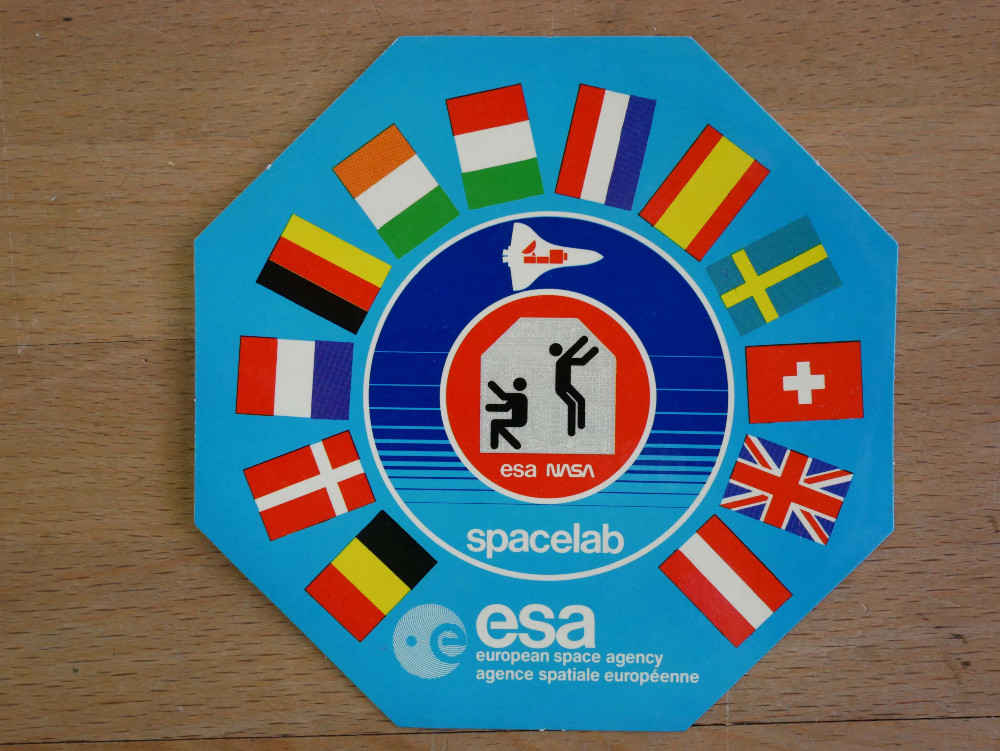

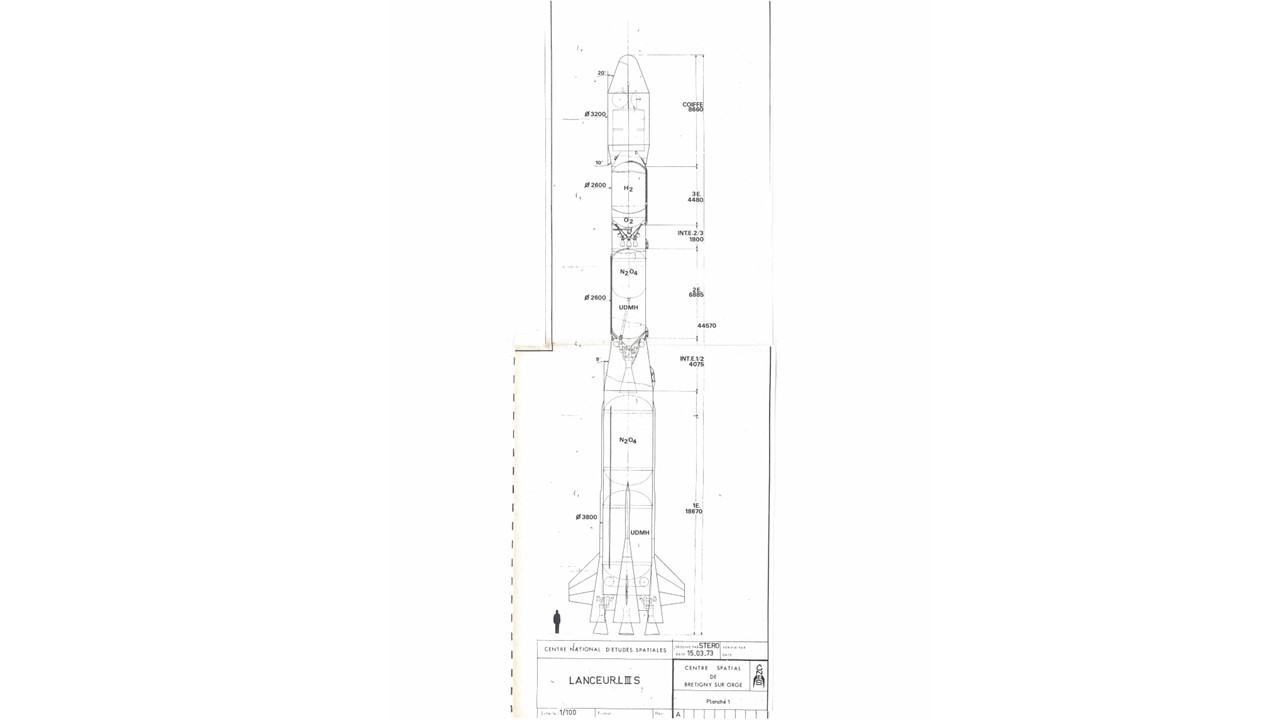
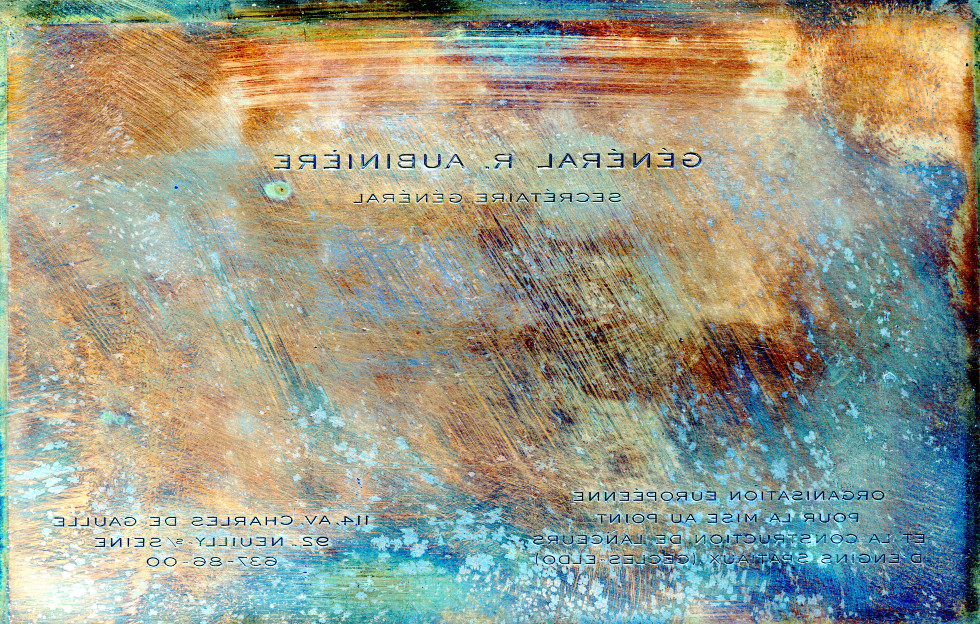
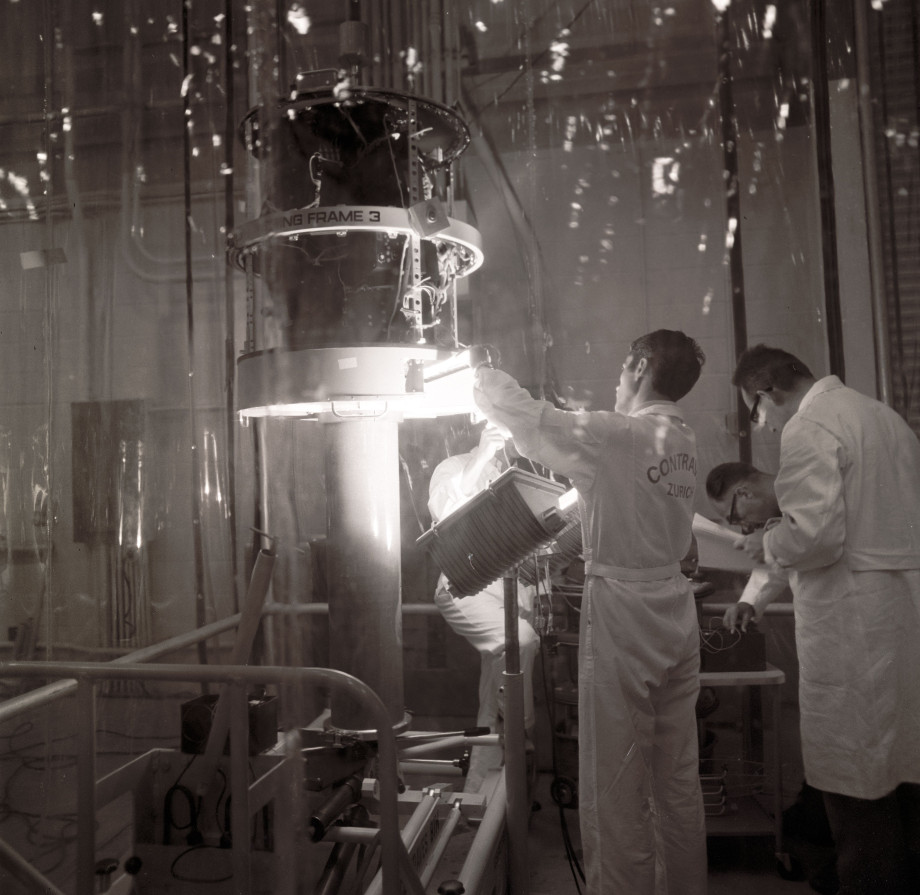

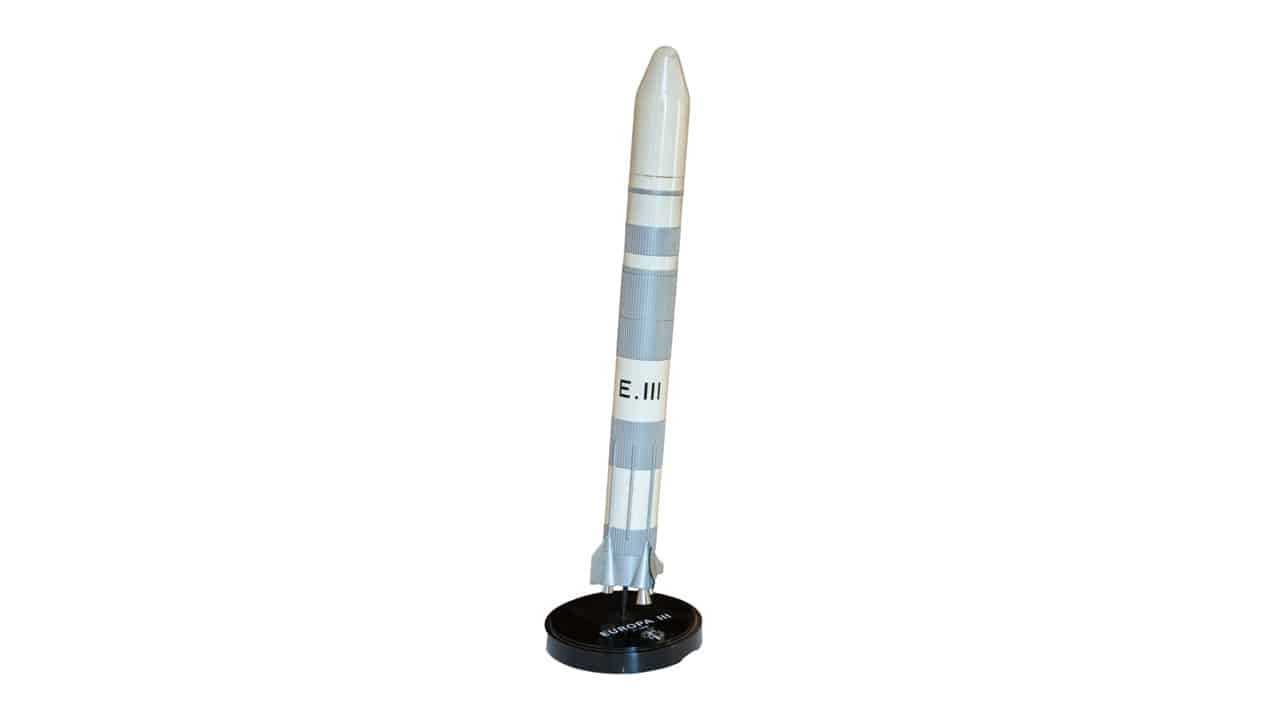
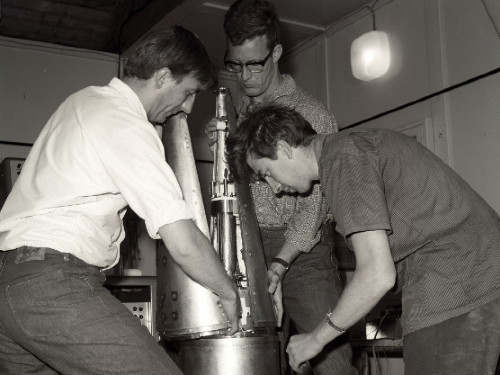
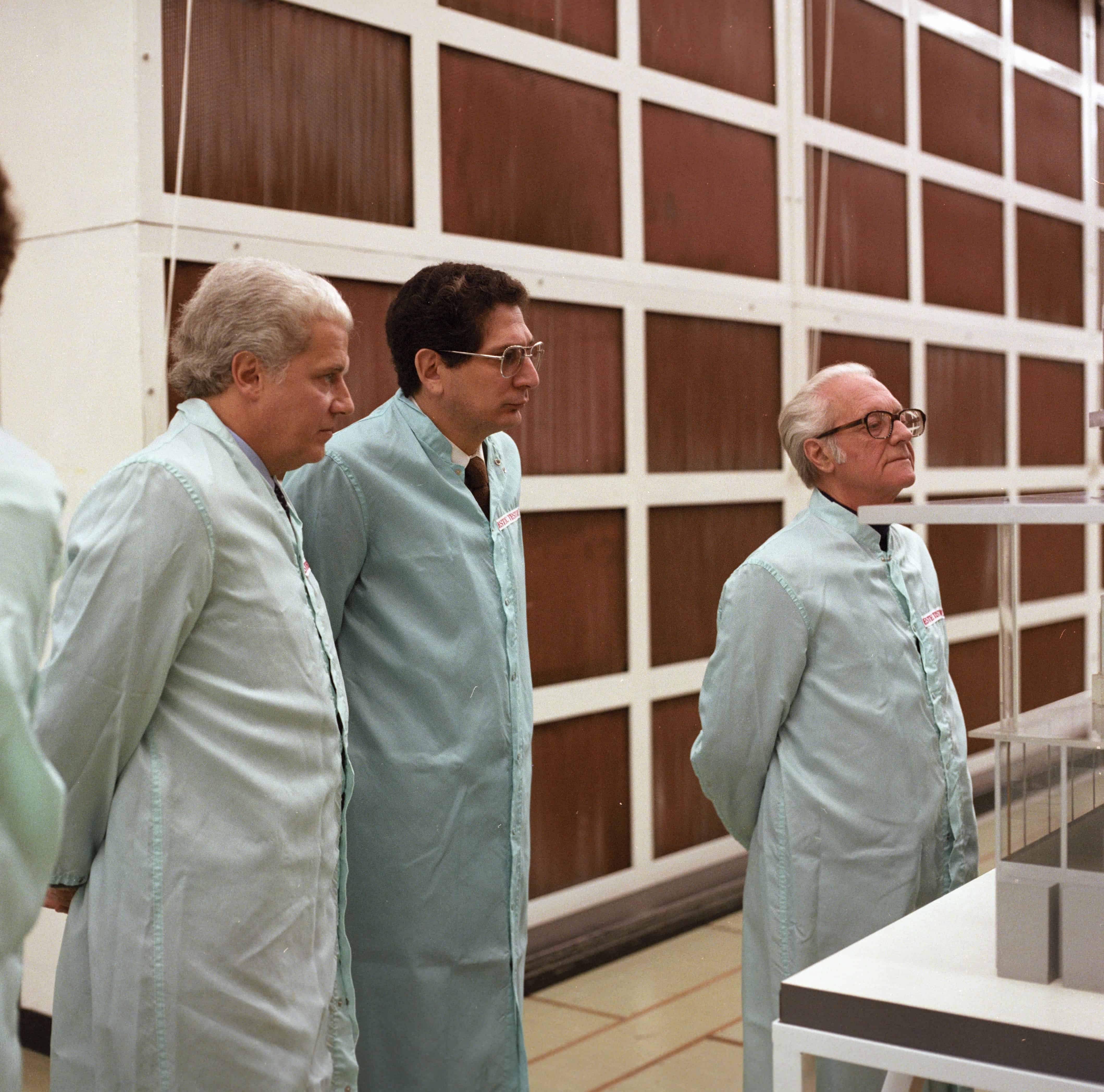

















Build your own Spacelab model!
It’s already July and summer holidays are on the horizon. If you are looking for ways to keep your children busy during the long summer break, help is at hand! This month’s object is a template to use to cut out and assemble a model of the LMS configuration of Spacelab.
Spacelab was an integral part of NASA’s Space Shuttle Programme, funded, designed and built by ESRO and subsequently ESA as a modular, general-purpose laboratory. It flew 22 missions between 1983 and 1998, making important contributions to astronomy, life sciences, atmospheric physics, Earth observation and materials science.
This configuration of Spacelab belongs to its Life & Microgravity Sciences (LMS) mission. Space Shuttle Columbia carried the Spacelab module on flight STS-78 for the LMS mission, which took place over 17 days from 20 June to 7 July 1996 and carried out research into the effects of long-duration spaceflight on human physiology in preparation for flights on the International Space Station.
The complete template (of which you can see the cover page here) comes as a z-folded document, made up of six different ‘pages’ - three forming the front side and the other three as the back side. Each of these pages is roughly A4 size, with the whole template measuring 65cm (width) by 25cm (height). It includes full instructions for assembling and putting together the base/cradle and laboratory which form the two main elements of the model, with tips printed on the back side of each of the parts, which are all perforated. While this meant they were easy to pop out of the template, it now has the disadvantage of making the document very fragile. Perhaps the best part is the three tiny astronaut figures to attach, which measure no more than 4cm. Unfortunately, this makes it almost impossible to establish whether they are based on the real-life astronauts who took part in the Spacelab missions (even if we like to think this is the case)!
We are offering a free download of the template (for personal use only) from the SHIP database for any aspiring model builders, or to simply use as a poster:
Open the template directly, or search for ESA_SPACELAB_MODEL in SHIP (this series contains tif files of both the front and back sides, which can be downloaded as a double-sided pdf file).
Please refer to the instructions for downloading files from SHIP and note that you will need to create a double-sided print to make the model. We unfortunately cannot guarantee that the front and back views will align perfectly when printed as this will depend on your printer and print settings. For this reason, and for its large dimensions, we suggest that you ask your local copy shop for help. We advise you to print on thick paper or thin card, ideally between 130 and 200gsm, at ‘Actual Size’ or scale to 100%.
We would love to see photos of your finished model so do share them with us, either by email to Archive.Services@esa.int or on the ESA Space History Facebook or X pages!
Music for Giotto’s meeting with Comet Halley
Each year the international Fête de la Musique or Make Music Day is celebrated in more than 100 countries on 21 June. With the occasion, we are once again taking the opportunity to focus on music inspired by space, and more specifically, by ESA missions.
This handwritten score for a piece of music, entitled Konstellation, was discovered in the papers of Professor Massimo Trella, ESA Inspector General from 1984 to 1998, when they were ingested into the ESA Archives. The piece was composed by Prof. Dr Peter Brömse (1912-2004), German composer and author, who was Professor of Music Education at the Justus Liebig University in Giessen from 1966 to 1977, where he was deeply involved in new didactics of music and new concepts for teacher training.
Accompanying details are scant, but it seems that it was piece of music composed for an event at ESOC to mark the rendez-vous of the Giotto spacecraft with Comet Halley in March 1986. A covering letter by the composer that came with the score, dated 18 September 1989, refers to a performance by the ESOCTETT – we are guessing this was an ESOC ensemble. The letter seems to be in reply to a request from ESOC for a copy of the music, with a view to it being played by an organist.
Eight different parts can be seen in the score (for flute, clarinet, bassoon, French horn, violin, viola, cello and bass) making an arrangement for woodwind, brass and strings. But we have been unable to locate any recordings of this music, and we don’t have any suitably qualified musicians in our team, so we have to admit that we have no idea how this piece actually sounds!
Since the Fête de la Musique is all about encouraging people to play music or enjoy concerts in public, the ESA Archives would like to encourage anyone interested in bringing this music back to life. We would be happy to share the score with musicians interested in performing it – please contact us as Archive.Services@esa.int!
ELDO staff list
Across much of Europe and the globe, 1 May is a public holiday, celebrated as Labour Day, International Workers’ Day or May Day and commemorating the struggles and achievements of the labour movement and workers in general. Accordingly, this month’s object is a staff register for ELDO, which very appropriately seems to have been compiled on 1 May 1964!
ELDO, the European Launcher Development Organisation (or European Space Vehicle Launcher Development Organisation) was formally created 60 years ago in 1964 with the entry into force of its Convention on 29 February, following ratification by five of its Member States. Its purpose was to establish a satellite launch vehicle for Europe and it operated until the mid-1970s when it was merged with ESRO to form ESA in 1975.
The register was compiled in French and entitled ‘Liste des agents en function avant la ratification de l’ELDO au 1er Mai 1964’ and therefore should list staff members of ELDO in post prior to 29 February 1964, when its Convention entered into force. Confusingly, however, the list goes on to record staff with start dates running up to 1 May 1964, so its title remains slightly unclear.
There is a mixture of typewritten and handwritten information: the first two columns are typed and include the name and date of entry. The rest of the list contains handwritten information such as: availability of contract (available or not), type of renumeration (salary or allowance), professional category (official/civil service or employee), pension provider and a last category which is not easy to decipher: ‘Mise à la disposition du Groupe Priparat. (?) par’. We assume this is a reference to staff who were made available to work for the Preparatory Group which set up ELDO by their respective government or organisation, and who then continued to work for ELDO. (There are lots of handwritten corrections to this column - probably made at a later date since they are in a different hand - often changing ‘privé’ to CNES – the French National Space Agency.)
It is also interesting to note that the legibility of the handwriting seems to decline as the list goes on, which is why we have selected page one here!
From this list we can ascertain that at the start of ELDO’s life as an independent, intergovernmental European organisation, it numbered 130 staff, along with 3 Australian and 8 Italian staff, paid for by their respective governments, who are listed separately. From the list, the longest serving staff member at the time was Jacob De Hoog, with a joining date of 1.1.1962 and the most recently recruited was Françoise Moussard, on 27.4.1964.
ERS-1 image of Toledo, Spain
18 April is the International Day for Monuments and Sites, an annual event, established by ICOMOS in 1982, and an opportunity for heritage enthusiasts and organisations worldwide to come together and celebrate the importance of cultural heritage.
We are celebrating the day with a SAR multitemporal image captured by the ESA ERS-1 satellite in 1993 of the area around Toledo – a UNESCO World Heritage site.
SAR is the abbreviation for Synthetic Aperture Radar. It is a special radar technique that allows users to obtain high-resolution radar images from large distances, for example, from space. Multi-temporal images are combined imagery of multiple images of the same place or location taken at different points of time, in this case during the period from June to October 1993, which can help to identify changes in a landscape.
Toledo is located in central Iberia, in a bend of the Tagus river (which can just about be seen in the image – trace a line straight up from the final backet around (Spain) in the title). It is home to the government and parliament of the autonomous community of Castilla-La Mancha, the region famed for the fictional ‘Man from La Mancha’ Don Quixote.
Throughout its history, Toledo has passed through many permutations: from being a Roman municipium to the capital of the Visigothic Kingdom, a fortress of the Umayyad Emirate of Cordoba in Al-Andalus and as the seat of the court of Charles V - Holy Roman Emperor and King of Spain - in the 16th century. Its historic centre has been inscribed on the UNESCO World Heritage List since 1986, for its extensive monumental and cultural heritage. As UNESCO notes, “Toledo is the repository of more than 2000 years of history. Its masterpieces are the product of heterogeneous civilizations in an environment where the existence of three major religions – Judaism, Christianity and Islam – was a major factor’’. Accordingly, it is also known at the ‘City of the Three Cultures’.
In slightly more recent history, Toledo also has a space connection as host of the first ERS-1 Pilot Projects Workshop which was held 30 years ago in June 1994 , to discuss the various applications of ERS-1 data, with presentation of more than 100 projects covering a wide spectrum of operational applications (e.g. meteorology, ice forecasting and bathymetry).
Watch out for our next collection opening, coming very soon, for more ERS-1 images and to explore the ways that space data can be leveraged for the protection of cultural heritage.
ESRO staff card
Continuing our exploration of the ESRO years, prior to the creation of ESA in 1975, this month’s object comes from the collection of ESRO Staff Member cards held in the European Centre for Space Records.
These cards confirmed that an individual was employed by the European Space Research Organisation and entitled them to the privileges and immunities granted to staff members of ESRO as an intergovernmental organisation. They were probably used much as staff badges are used within ESA as identification today.
This particular card was issued to Georges Kenedi, but it does not include his job title. From the ESRO staff records in the ECSR, we believe that he was appointed in 1967 as Secretary to Council, a position that in the early 1970s became Head of the Director General’s Cabinet (and that continues in ESA today). Since the ESA Archives at the ECSR are part of today’s Director General’s Cabinet, we can also consider M. Kenedi as one of our former managers.
An interesting side-note is the address listed at the top of the card for ESRO headquarters. ESRO began life in rented headquarters at 36, rue La Pérouse, in the 16th arrondissement, as per the header on the card. However, it later moved to 114 Avenue de Neuilly in Neuilly-sur-Seine, the location noted here as his duty station. (To confuse matters even further, Avenue Neuilly was renamed as Avenue Charles de Gaulle in 1971, in the aftermath of de Gaulle’s death in November 1970.)
Since the date of issue on the reverse of the card is 24 May 1968, we can safely assume that the move to Neuilly took place before then, a fact confirmed in ESRO reports and documentation which give a date for the move as November 1967.
As for the use of these two different addresses on the same card, it seems likely that a decision was made to use up the stock of cards with the old address, before putting in an order for new ones!
The ECSR’s ‘fake’ ELDO and ESRO flags
Staying with the theme of anniversaries, the story behind this month’s objects, despite appearances, actually begins in 2014!
And in another change from usual, it’s about recreating the past rather than preserving material from it.
Let’s begin with the anniversary: back in 2014, planning was underway across ESA establishments for the series of events celebrating fifty years of European cooperation in space. (That is, 50 years since the creation of ELDO - the European Launcher Development Organisation, and ESRO - the European Space Research Organisation, the first European space organisations and ESA’s predecessors, in 1964.) But in ESRIN the immortal words ‘we have a problem’ were uttered (although for an admittedly less major crisis than Apollo 13). The issue? The ESA flag and the flags of its Member States were to be hung in the room at ESRIN that would host the formal celebrations, but it came to light that ESA was not in possession of an original ELDO or ESRO flag. We know that both organisations had produced flags, since we can see them in some of the historical photos in our collections, but they had clearly been lost somewhere along the way.
And that is where the ESA Archives became involved. Using the logos and images held in the European Centre for Space Records a new set of flags was quickly commissioned, and took pride of place in the ESRIN Big Hall throughout 2014.
This may come as a surprise to any participants reading this today – we suspect it was generally assumed that the flags were originals!
And the epilogue is that at the end of the celebrations, the flags were given to the ECSR where they hang today as you can see in the photo, alongside the flag commemorating 50 years of space cooperation.
The first ten years of Europe in space!
2024 is a special year since it marks 60 years since the founding of the first European space organisations, and ESA’s predecessors, ELDO (the European Launcher Development Organisation) and ESRO (the European Space Research Organisation), in 1964.
Fast forward a decade and we arrive in 1974, which was the first major anniversary for ESRO. Its officials planned a ten-year celebration in Paris, with ten speakers (presumably one for each year?) talking about the organisation’s history and activities, and including former chairmen and directors. Another special guest was Arnold Frutkin, NASA Assistant Administrator for International affairs, who did not arrive empty handed - he presented this plaque, commemorating ten years of ESRO-NASA cooperation to the then Director General of ESRO, Alexander Hocker. (Search for ‘10th Anniversary of ESRO’ in the SHIP database to see pictures from this event.)
The plaque itself bears the signature of NASA Administrator James C. Fletcher and shows six ESRO satellites: TD-1, HEOS-1&A2, ESRO-1, ESRO-1B, ESRO-II and ESRO-IV, in roundels along the top and on the left-hand side. Sharp eyed readers will have noticed that it follows US (or Oxford) English in spelling organization with a ‘z’, where the ESRO Convention used an ‘s’. Or perhaps NASA chose to be consistent with the spelling adopted by Edoardo Amaldi in his 1959 text on space research in Europe, which is where this whole story began!
We are not sure how the plaque found its way into the ESA Archives, but today, it is part of the holdings of the European Centre for Space Records at ESRIN, and its future is safeguarded.
And with that happy ending, the Archives team wishes a happy new year to all our readers!
Map of Esrange, Kiruna
It is already December and your preparations for Christmas may already be underway. If you can hear sleigh bells in the distance, your ears are not deceiving you - we are in Kiruna in Swedish Lapland this month!
This beautiful hand-drawn map was produced for ESA’s predecessor ESRO at some point in the late 1960s, by Swedish designer Robert Hont. It shows the site of Esrange (the European Space Research Range), a rocket range and research centre built by ESRO in the mid 1960s, just to the east of Kiruna, in the Arctic Circle and in northern Sweden. The ownership of Esrange was transferred to the newly created Swedish Space Corporation in 1972, with ESA as a regular user and major research partner. ESA also maintains a connection with the area through its Kiruna station just down the road, part of the Estrack tracking station network.
Jan Stiernstedt, who was Chairman of the ESA Council from 1978 to 1981, played an important role in the establishment of the Swedish National Space Board and the Swedish takeover of Esrange. A tribute to him in the November 2008 issue of the ESA Bulletin by Kerstin Fredga, Chair and Director General of the Swedish National Space Board from 1989–98, contains a fascinating snippet about the history of Esrange:
One concern was the reindeer herding and the possibility of a reindeer being hit by a rocket or a burnt-out rocket stage. The Lapps got, and still have, a yearly compensation for this eventuality. Also, special impact-proof shelters supplied with food and dry fire wood had to be built for those who happened to be in the impact area, and the Lapps received a battery-powered radio for them to listen to the countdown of each rocket launch. These measures became quite popular and the shelters are still used as fishing and hunting huts by the local people and, so far, not a single reindeer has been hurt.
We trust that this is still the case and are happy to add protecting reindeer to ESA’s accomplishments!
Spacelab sticker
Later this month we will mark 40 years since the launch of the first Spacelab mission and the first ESA astronaut, Ulf Merbold, on 28 November 1983. As a sneak preview, this month’s object is one of the stickers produced for the programme.
Spacelab was also one of the first flagship ESA programmes, for a European, reusable space laboratory, designed to be flown on the Space Shuttle with a different mix of modular elements for each mission.
Stickers were often part of the press kits for mission launches, along with brochures, pin brooches and other gadgets. The central part of this sticker shows Spacelab nestled in the Space Shuttle cargo bay, with two astronauts at work underneath, presumably busy conducting experiments in it! Around the outside are the flags of the then 11 Member States of ESA and Austria (with whom ESA had signed an association agreement in 1979). Stickers often replicated the design of mission patches and in this case an almost identical design was used in orbit on the Spacelab-1 mission, so we can assume that this sticker also dates back to 1983 and to the first mission.
Watch this space for a special anniversary opening of material, and a celebration of the legacy of Spacelab, coming soon!
ESTEC hosts royal visitors in October 1976
In September 2023, the King of Sweden, Carl XVI Gustaf, celebrated his Golden Jubilee. Currently the longest-reigning Swedish king in history, he ascended to the throne in September 1973. While preparing the latest set of photographs in our historical picture collections for opening later this month, we came across this record of a royal visit he made to ESA ESTEC in October 1976.
The photograph shows the King facing the camera towards the bottom right. His wife Silvia, the Queen of Sweden, is in the centre and they were hosted by Roy Gibson, ESA Director General, at the top left. (The young King and Queen were newlyweds at the time – their marriage had taken place just months before, in June 1976.)
The ESA Bulletin reports that this visit to ESTEC was made in the company of Princess Beatrix of the Netherlands during the course of a three-day state visit to the Netherlands: ‘After being introduced to the Agency’s Swedish staff, they attended a presentation of the work of the Agency and made a tour of ESTEC facilities’.
LIIIS becomes Ariane in September 1973
The origins of the Ariane programme can be traced back to the 1970s and a project entrusted by the European Space Council to ESA’s predecessor ESRO, called LIIIS, to develop a competitive European satellite launcher. LIIIS was the working name adopted for the ‘third generation substitute launcher’ (hence the three ‘i’s), the heir to the abandoned ELDO Europa 3 programme. The name Ariane was adopted by delegates at ESRO’s AFC (Administrative and Finance Committee) fifty years ago, in September 1973. In his book Advocate of Space Swiss delegate Peter Creola recounts the heated debates over a new name – “a whole continent was embroiled in a row between competing interpretations of classical mythology”. He doesn’t explain why Ariane was proposed but admits that it was chosen simply because it was only option left on the table! Whereas André Lebeau in Ariane: Entretiens avec André Lebeau tells us that the name was effectively imposed by French Minister Jean Charbonnel.
If, like us, you need a recap, in Greek mythology Ariadne was a Cretan princess and the daughter of King Minos, known for using a ball of thread to help Theseus escape the Labyrinth. Perhaps her subsequent deification by her husband Dionysus as the Goddess of paths and labyrinths is the clue to the link with the launcher? Or could it be in the Corona Borealis constellation, created when Dionysus set her wedding diadem into the heavens?
This image shows a fold-out technical drawing of the LIIIS launcher, from an annexe to a dossier of CNES preliminary studies produced in March 1973. These initial studies all contained a planned date of 1980 for a maiden flight. In the event, ESA beat them to it by one week and the success of Ariane’s first launch, on 24 December 1979, paved the way to hundreds of further launches, and a significant share of global commercial launch contracts.
If you are interested in the continuation of the Ariane story, check ESA’s Space Transportation pages for updates on the development of the Ariane-6 launcher and its first flight.
ELDO business card printing plates
This month we are showcasing a recent rediscovery from the Archives. Almost forgotten on the shelves of the ECSR’s stack was a small blue box, with an intriguing list of contents handwritten on its top cover: ‘Plaques pour cartes visite’.
Inside are a set of engraved printing plates, we think in copper, for business cards for the top management of ELDO. ELDO was the European Launcher Development Organisation, also known as the European Space Vehicle Launcher Development Organisation, which existed from 1964 to 1975, when it was merged with ESRO (the European Space Research Organisation) to become ESA.
In the picture is the printing plate for the Secretary General of ELDO, General Robert Aubinière (find out more about him in our glossary), obviously back to front. We were interested by the disparity between the French acronym for ELDO – CECLES, for Centre Européen pour la Construction de Lanceurs d'Engins Spatiaux – and the spelled out (and lengthier) organisation name of ‘Organisation Européenne pour la Mise au Point et la Construction de Lanceurs d’Engins Spatiaux’. This seems to mirror the variations in the organisation’s name in English mentioned above. We are grateful that in 1975 ESA adopted a much simpler name!
What’s also striking is that all the plates are only in French. We might assume from this that the organisational culture of ELDO was very much francophone, unlike today’s multicultural ESA.
Sadly, the box doesn’t contain all the items listed on its cover and the plates for the generic ELDO-CECLES cards are missing. But it’s still a wonderful find and a great insight into the world of ELDO in the 1970s and traditional copperplate printing methods. We also think this image (a scan of the plate) brings to mind some of the stunning images of space produced by the Hubble and James Webb Space Telescopes!
A serenade to ESRO-1B
21 June is known around the world as the Fête de la Musique or Make Music Day. Established in Paris in 1982 by Jack Lang of the French Ministry of Culture, the festival is now celebrated in more than 700 cities in 120 countries, including Germany, Italy, Greece and the UK, with people encouraged to play music outside in public spaces or attend free concerts.
To encourage your musical aspirations, why not start with space? Here is the ESRO-1B (Boreas) satellite, one of the first pair of ESRO satellites which was launched in 1969 to study near-Earth space and which inspired a piece of music by avant-garde Italian composer Bruno Maderna. At that time Maderna was living in Darmstadt, home to both the famous Darmstädter Ferienkurse for contemporary classical music and to ESRO’s European Space Operations Centre, which was responsible for operating satellites after their launch. It was therefore natural that the Director of ESOC, Umberto Montalenti, also a patron of the arts, gave the commission for a piece of music to celebrate the launch to Maderna.
Ironically, the subsequent composition – Serenata per un Satellite – enjoyed greater success than the satellite itself. Due to launcher underperformance the satellite was injected into too low an orbit and reentry inevitably occurred within two months. In her book How to survive in Space, staff member Madeleine Schäfer recounts that this led to the ESOC colleagues disrespectfully renaming the piece Serenade to a Dying Satellite.
The score of the Serenata is written in an open style that allows the performers to begin reading at several points – you can listen to various interpretations of it on YouTube.
Unfortunately, the ESA Archives holds no material related to Maderno’s composition and its link to ESA, and so our research had to be carried out using internet sources. These gaps in our holdings are arguably as important as those we do have: they highlight how certain kinds of material do not easily find their way into formal collections and the challenge institutional archives face in acting as a collective memory. And they also underline the important contribution of the community behind an organisation in supporting the preservation of its culture and memories.
Lord Louis Mountbatten on an informal visit to ESOC in 1972
To celebrate the coronation of King Charles III on 6 May, this month we are highlighting ESRO’s royal connections, and a July 1972 visit by the UK’s former Admiral of the Fleet - Louis Mountbatten, 1st Earl Mountbatten of Burma, to ESOC.
This photograph shows Lord Mountbatten, on the right, with then ESRO Director of Administration Roy Gibson at the flipchart. (We think the man seated on the left is C G Giles from the Research Division of the UK Department of Trade and Industry, and the man seated in the centre is most likely S. A. Jenssen, Acting director of ESOC). Gibson recounts in his book Recollections that ESRO was contacted by the British Foreign Office with a request to demonstrate its Remote Console System – RECON – to Lord Mountbatten at ESOC. RECON was the first online search system in Europe, based on data retrieval using keywords, which was completed and operational in August 1969. It was managed by the ESRO Space Documentation Service in Frascati, with terminals across Europe.
Lord Mountbatten had a long career in the Royal Navy, where he specialised in wireless and wrote two handbooks for the Navy on wireless telegraphy, culminating with several high-ranking positions prior to his retirement in 1965. He became Chairman of the newly formed National Electronics Research Council in July 1964, was President of the Institution of Electronics and Radio Engineers in 1947 and 1961 and elected to Honorary Membership of the Institute of Electrical Engineers in 1965 for his ‘contributions to the progress of electrical and electronic science and engineering’.
Roy Gibson and Lord Mountbatten were known to each other, probably from their time in military service in South Asia, and Mountbatten recognised him on his arrival at ESOC. Gibson describes the event: He looked at me standing at the top of the steps and said: "Gibson, what the bloody hell are you doing here?" "It's me, the boss" I replied". (Gibson, of course, would go on to become ESA’s first Director General in 1975.)
Lord Mountbatten was a close relative of the British royal family. His great-grandmother was Queen Victoria, which made him a second cousin, once removed, to Queen Elizabeth II. He was also Prince Philip's uncle, and therefore great-uncle to King Charles III. Known as ‘Uncle Dickie’, the then Prince Charles and Lord Mountbatten were known to have had a close relationship.
Scale model of ELDO’s Europa launcher
Europa was the first European satellite launcher development programme. ESA’s predecessor ELDO was responsible for 11 Europa launches (F1 - F11) between 1964 and 1971, from Woomera in Australia and Kourou in French Guiana. Find out more about these launches in our Space Timeline. Spiralling costs and disappointing tests of the upper stages led to the eventual closure of the programme in 1973.
But beyond the launcher itself, there’s also the fascinating story of this physical object, and its own particular journey to being held in the ECSR collections.
From the ESA side, things all began in 2019 when a colleague forwarded an email to the Archives team. The message was from an Italian man whose mother had worked for Renzo Carrobio di Carrobio, Secretary General of ELDO from its creation in 1964 until 1971. He had inherited the model from his mother (to whom it had been gifted by Carrobio di Carrobio). Worried that his young child might damage the model when playing with it, he offered to donate it to ESA. Naturally, the Archives were delighted to accept this wonderful piece of space heritage. In return, ESA offered a replacement model - of ESA’s Vega launcher - to the son as a much safer model to play with!
We are very grateful to the generosity of this particular person, through which we have an important physical link to the first ELDO Secretary General, and to everyone who has given material to the Archives over the years. We are always here for any future donations!
ESA’s ‘new’ Headquarters under construction in 1976
In 2023, after almost three years of construction, the opening of ESA’s new Headquarters building in 8-10 Rue Mario Nikis, in the 15th arrondissement of Paris, is imminent. But this won’t be the first Head Office building on this site – here you can see works in May 1976 to prepare the original HQ building in rue Nikis for the arrival of staff in October of that year.
However, Rue Nikis wasn’t the first home for ESA’s Headquarters. After starting life in various Paris locations, ESA’s predecessors - the European Space Research Organisation and European Launcher Development Organisation - came together in 1967 in rented accommodation at 114 Avenue Charles de Gaulle in Neuilly-sur-Seine. And it was at this address that ESA came into being in 1975, with the merger of ESRO and ELDO, and where the search began for suitable office space for ESA’s own building.
The right location was found in former electronic components laboratories in a street named after Mario Nikis (1908-1944). We think Nikis was an alumnus of the nearby Ecole Supérieure d’Electricité (in Rue Germaine de Staël) who went on to work for French national radio, and was Director of the Nikis Laboratories in Clermont-Ferrand and a French Resistance fighter.
Staff had the chance to see the renovation works to the site on a visit in July 1976 and the works were completed by the autumn. ESA Bulletin No. 7 announced in November 1976 that staff had moved in on 18 October.
Assembling the Skylark sounding rocket payload in August 1965
Skylark was a family of British sounding rockets and the UK’s first space rocket. In the 1960s and 1970s ESA’s predecessor ESRO used two types of Skylark sounding rockets to conduct investigations as part of its operational programme (Raven VI/Cuckoo and Raven VI/Goldfinch), launching seven Skylark rockets from the Salto di Quirra range in Sardinia, Italy, between 1964 and 1965.
This photo appears to show the S.03 or S.04 payload being assembled at ESTEC. Generally, rocket-borne payloads were constructed in duplicate, both payloads being launched in succession: two boosted Skylark rockets carrying this payload were launched at sunrise in Sardinia on 30 September and 2 October 1965, to investigate atmospheric parameters using release experiments. Both launches were successful and all emissions were observed. One of the experiments, R-33: Barium release, was undertaken by Professor Reimar Lüst of the Max Planck Institute for Extraterrestrial Physics, who would go on to become ESA’s third Director General in 1984. We can’t be sure but we think he could be the man in the middle!
Edoardo Amaldi visits ESTEC in 1979
The Italian physicist Amaldi is one of ESA’s founding fathers. A key advocate of the establishment of a European organisation for space from the very start, his open letter of 1959, urging the creation of a European organisation for space, set in motion the process that led to the founding of ESA’s predecessors, ESRO and ELDO in 1962.
In the wake of this, ESRO’s European Space Research Institute in Frascati (ESRIN), was established in 1966 and is home today to the ESA Archives at the European Centre for Space Records. Ironically, one of the gaps in our holdings is any photo of Amaldi from these early years, particularly as we have his signature in the ESRIN guest books!
Following the merger of ESRO and ELDO to form ESA in 1975, Amaldi became Chair of its Science Programme Committee in July 1979. He is seen here in that same year, visiting ESTEC, ESA’s technical hub in the Netherlands, 20 years after it all began. (Amaldi is on the right, on the left is Massimo Trella, ESA Technical Director.)
Are you lost? Don't know how to search?
How to search, use and credit ESA Archives material.
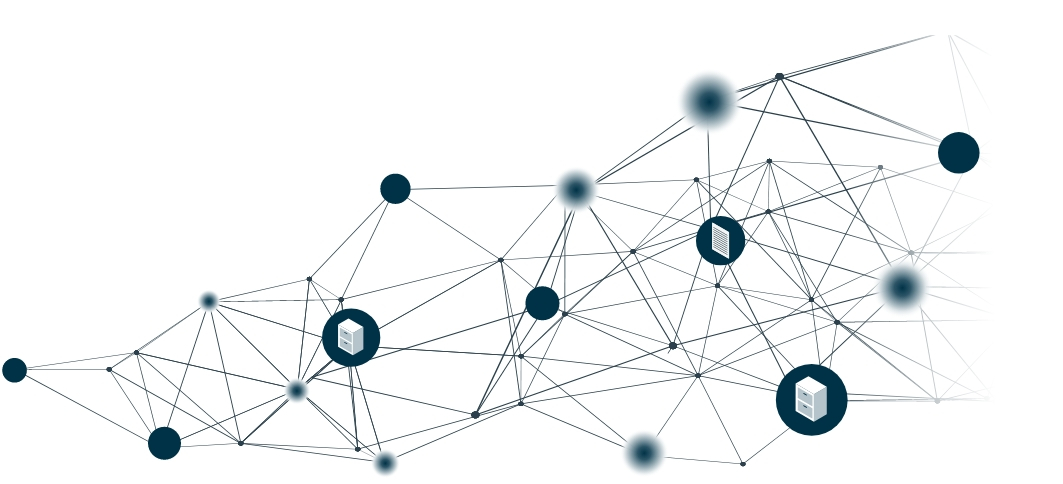
ESA Archives
The ESA archives both preserves ESA’s institutional memory and promotes and exploits Europe’s scientific and technical legacy in space. An important part of our work, and the purpose of this website, is making our vast resources available online to anyone with an interest in the story and benefits of European endeavours and cooperation in space.
